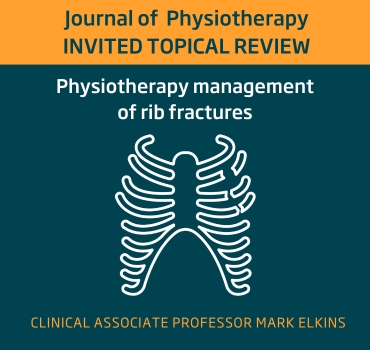Physiotherapy management of rib fractures
Rib fractures are a common injury to the chest. While they can be simple with minimal morbidity, their management can be complicated by misdiagnosis, concurrent injuries or comorbidities.
The most common cause of rib fractures is blunt chest trauma. Rib fractures can occur anywhere in the thoracic cage but are more likely to be found in the posterior and lateral portions of ribs four to nine. Less commonly, overuse stress in sports involving resisted upper limb movement including rowing, baseball, golf and gymnastics can result in stress fractures.
Physiotherapists can offer a variety of interventions to manage rib fractures, including localised splinting and taping to reduce pain and movement of the fractured region, transcutaneous electrical nerve stimulation to reduce pain, and breathing exercises and airway clearance to maintain lung expansion and prevent infections. A variety of other interventions have also been shown to be beneficial in single randomised trials; while promising, replication of these studies is warranted.
In his Journal of Physiotherapy Invited Topical Review, Clinical Associate Professor Mark Elkins provides a comprehensive summary of the management of rib fractures, including categorisation and aetiologies, incidence and diagnosis, medical management and the evidence for various physiotherapy interventions. Future directions for research and practice are also discussed.

For more information and to read the entire Invited Topical Review, click here.
This blog is a Physiotherapy Research Foundation (PRF) initiative.
Mark Elkins APAM is a Clinical Associate Professor at Sydney Medical School, where he researches physical and pharmacological therapies in respiratory disease. He is the Scientific Editor of Journal of Physiotherapy and the current chair of the International Society of Physiotherapy Journal Editors. He is a co-director of the Physiotherapy Evidence Database where he researches ways to improve the quality of clinical trials.
